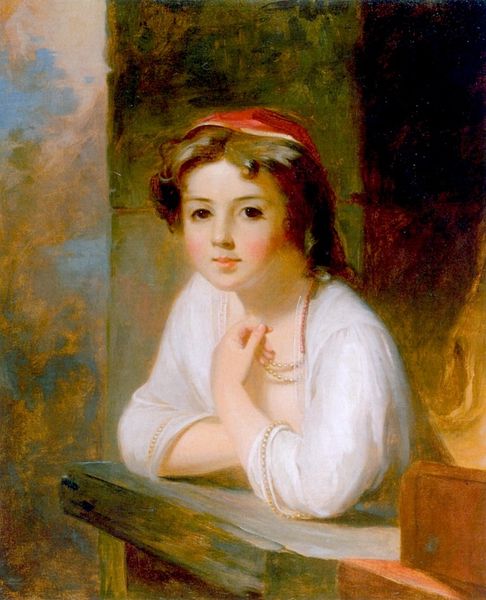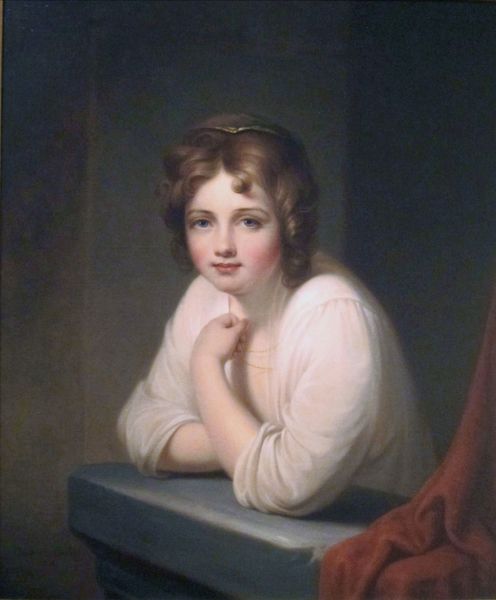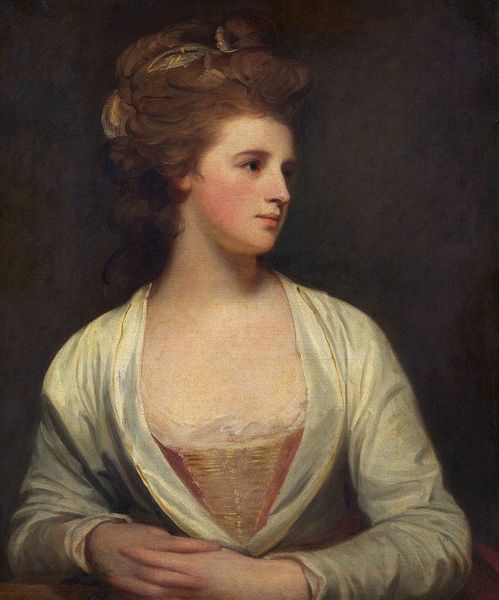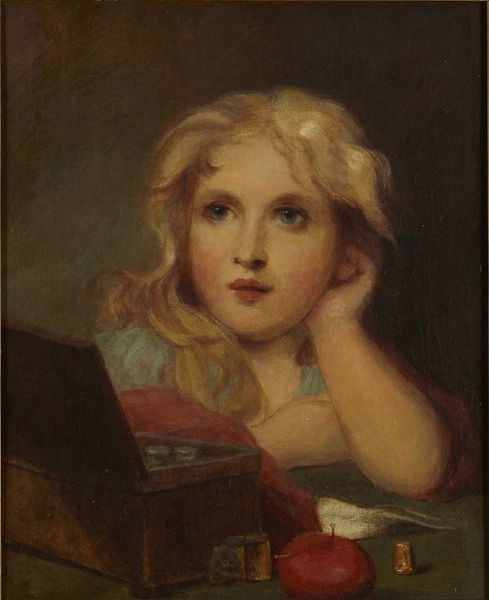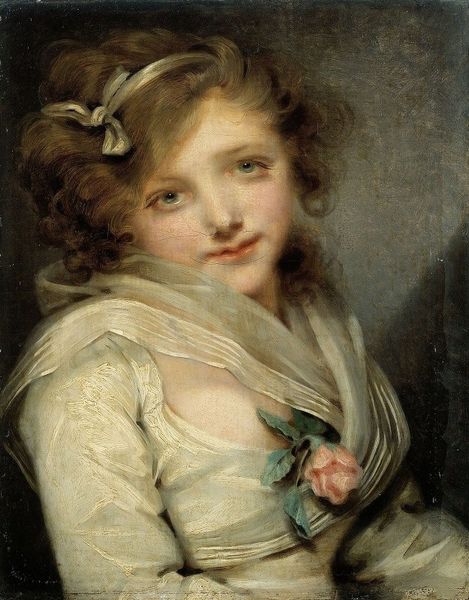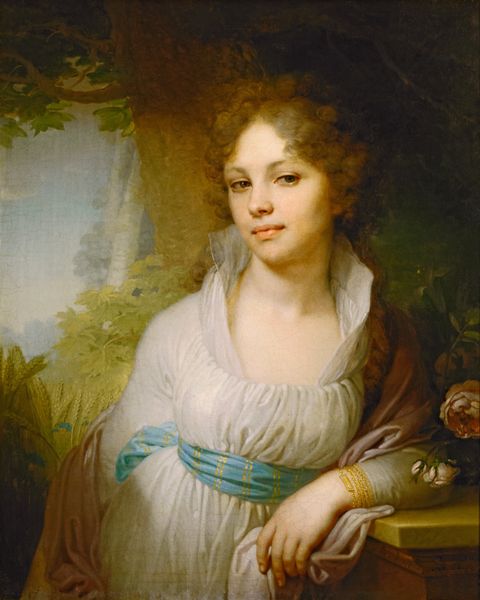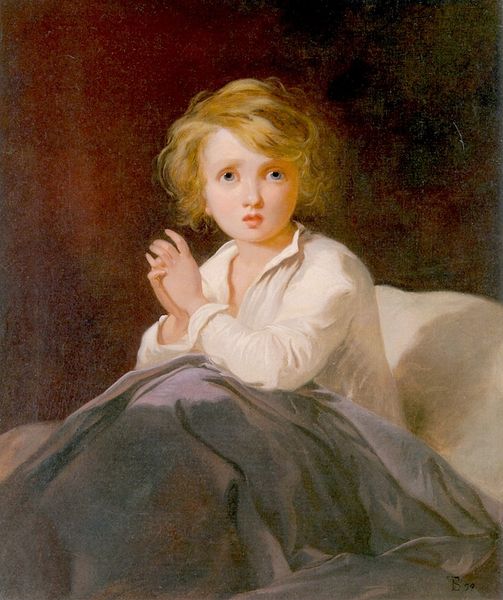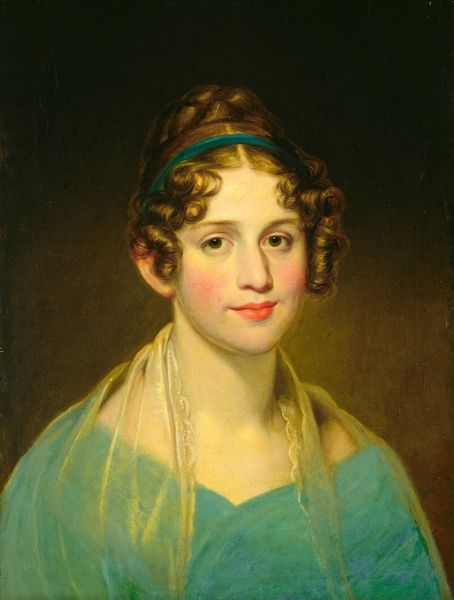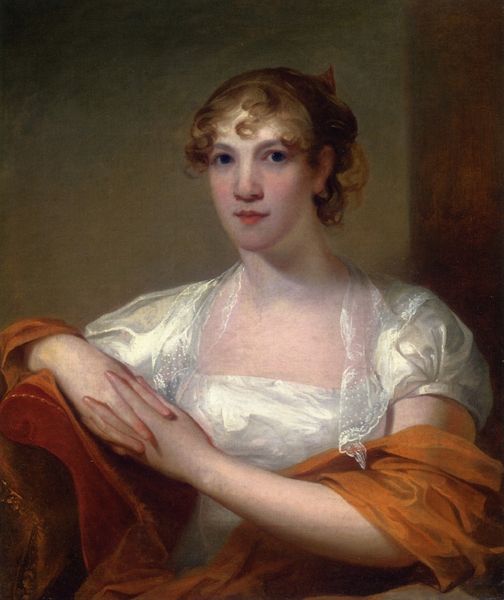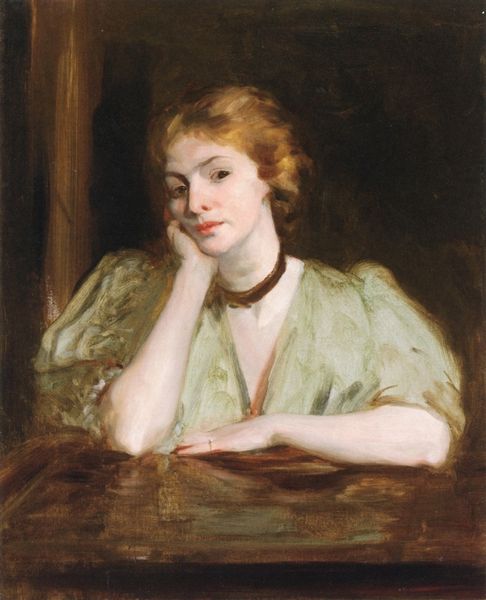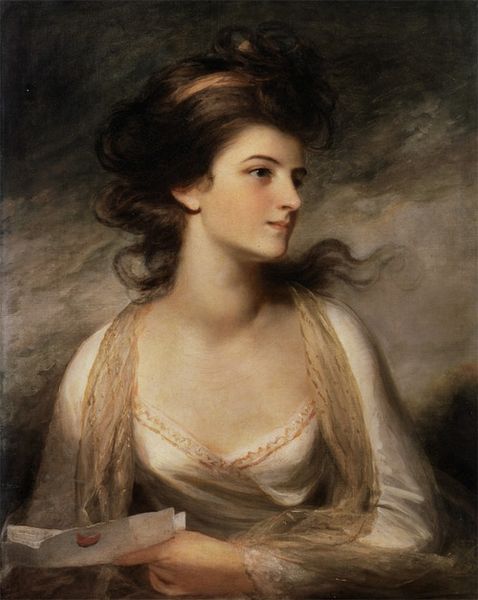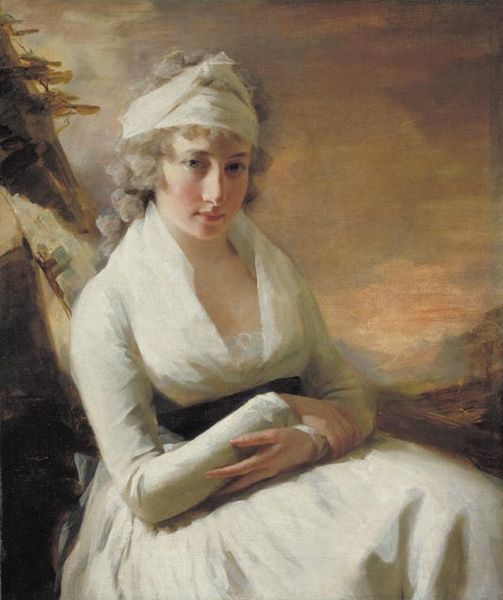
Copyright: Public domain
Editor: We're looking at Thomas Sully's "Peasant Girl (after Rembrandt's 'Young Girl Leaning on a Windowsill')," painted in 1866 using oil paints. I'm struck by her contemplative gaze and the soft light. It feels very intimate, almost like we're intruding on a private moment. What do you see in this piece? Curator: Beyond the surface, I see a fascinating dialogue with artistic tradition. Sully's choice to revisit Rembrandt highlights the power of the past to shape contemporary artistic expression. Why recreate a "peasant girl"? We need to consider 19th-century artistic hierarchies, where history painting was prized, and genre scenes like this were considered lesser. By painting in the style of, and directly referencing Rembrandt, is Sully commenting on, reinforcing, or perhaps even undermining the status quo of genre works, of art in general, or even the artistic practices of museums in displaying particular subjects? Editor: So it’s about more than just admiration for Rembrandt? Curator: Precisely. This "Peasant Girl," becomes a commentary on art markets and how the echoes of “Old Masters” like Rembrandt resonate, influencing both artistic creation and public tastes. Did Sully hope to align himself to, or improve his own reception, by evoking such an established name? Editor: That’s such a different way to look at it! I was focused on the individual in the painting, not the painting's place within art history. Curator: Context is crucial. Who painted the image, for what perceived market and audience? A museum of the 19th century would have had certain tastes for works, which may appear dated by contemporary viewers. Editor: This makes me consider how museums create the narrative of art history. Thanks for sharing your expertise. Curator: And it reminds me how interpretations change. It is all interconnected!
Comments
No comments
Be the first to comment and join the conversation on the ultimate creative platform.
